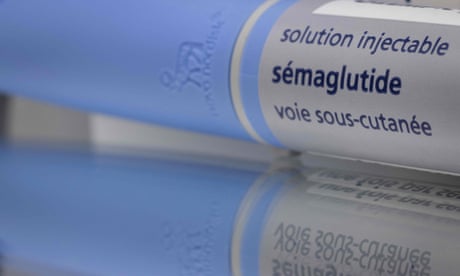
Drug companies are pricing diabetes medicines at almost 400 times the level necessary to make a profit, according to a new study.
Researchers said it would also be possible for modern insulin pens, which are safer and offer more accurate doses than vials and syringes, to be used even in low-income countries if pharmaceutical firms “put people before their astronomical profits”.
A new generation of diabetes drugs known as GLP-1 receptor agonists (GLP-1s) include Novo Nordisk’s Ozempic (semaglutide), taken by some celebrities as a weight-loss aid, and Eli Lilly’s Trulicity (dulaglutide). They are now a standard part of treatment in high-income countries, but are unaffordable in many parts of the world despite rising rates of the condition.
The study used data on the costs of ingredients, packaging and logistics to calculate the potential price at which companies could make a profit, as well as paying taxes. The researchers concluded that GLP-1s could be sold at a profit for US$0.89 (71p) a month, but found prices ranging from $38.21 to $353.74.
The study is published by Médecins Sans Frontières (MSF) in the Journal of the American Medical Association (JAMA) Network Open.
“These new drugs are an absolute gamechanger for people living with diabetes, but are being kept out of the hands of hundreds of millions of people in low and middle-income countries who need them,” said Christa Cepuch, the pharmacist coordinator at MSF’s Access Campaign and one of the study’s authors.
“Eli Lilly and Novo Nordisk can in no way supply the world with the amount of these medicines needed to meet global demand, so they must immediately relinquish their stranglehold and allow them to be produced by more manufacturers around the world.”
The study also found large markups on pens ready-filled with insulin. Insulin is a hormone that helps to control blood sugar and a vital treatment globally for people with diabetes, whose bodies do not make or use it correctly.
A single pre-filled human insulin pen could be sold at a profit for as little as $0.94, MSF said, but prices ranged from $1.99 to $90.69.
Dr Helen Bygrave, a non-communicable diseases adviser for MSF and another of the paper’s authors, said it “busted” the myth that vials of human insulin injected with syringes was the most affordable option.
“Nobody starting insulin today in my medical practice in the UK would be expected to inject insulin with syringes,” she said. “We need to see pharmaceutical corporations put people before their astronomical profits and bring their pen prices down dramatically, so that we can put an end to this global double standard in diabetes care.”
A Novo Nordisk spokesperson said: “While we are unaware of the analysis used in the study, we have always recognised the need for continuous evaluation of innovation and affordability levers to support greater access of our products. We continue to support greater health equity to those in need of diabetes treatment and care.”
A spokesperson for Eli Lilly said it was exploring opportunities to supply its medicines in settings with limited resources via various access initiatives, and had provided “$4.3bn in medicines to charitable organisations that offer medicines for free to qualifying patients around the world” last year.
They said it had also shared technology with the Egyptian generic pharmaceutical manufacturer EVA Pharma to improve supplies of high-quality insulin “to at least one million people living with type 1 and type 2 diabetes in low and middle-income countries, most of which are in Africa”.